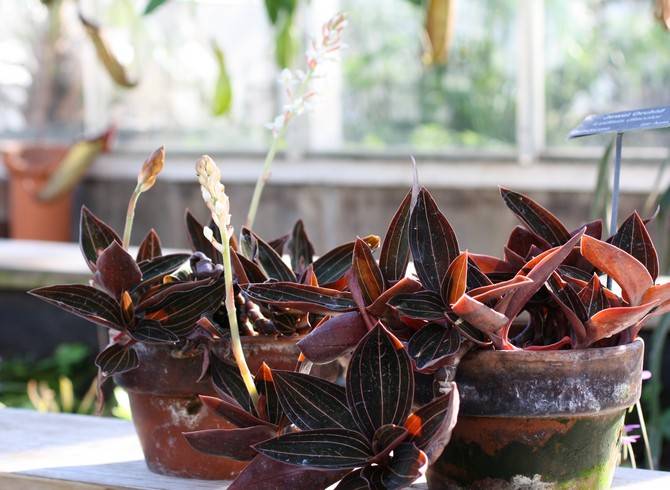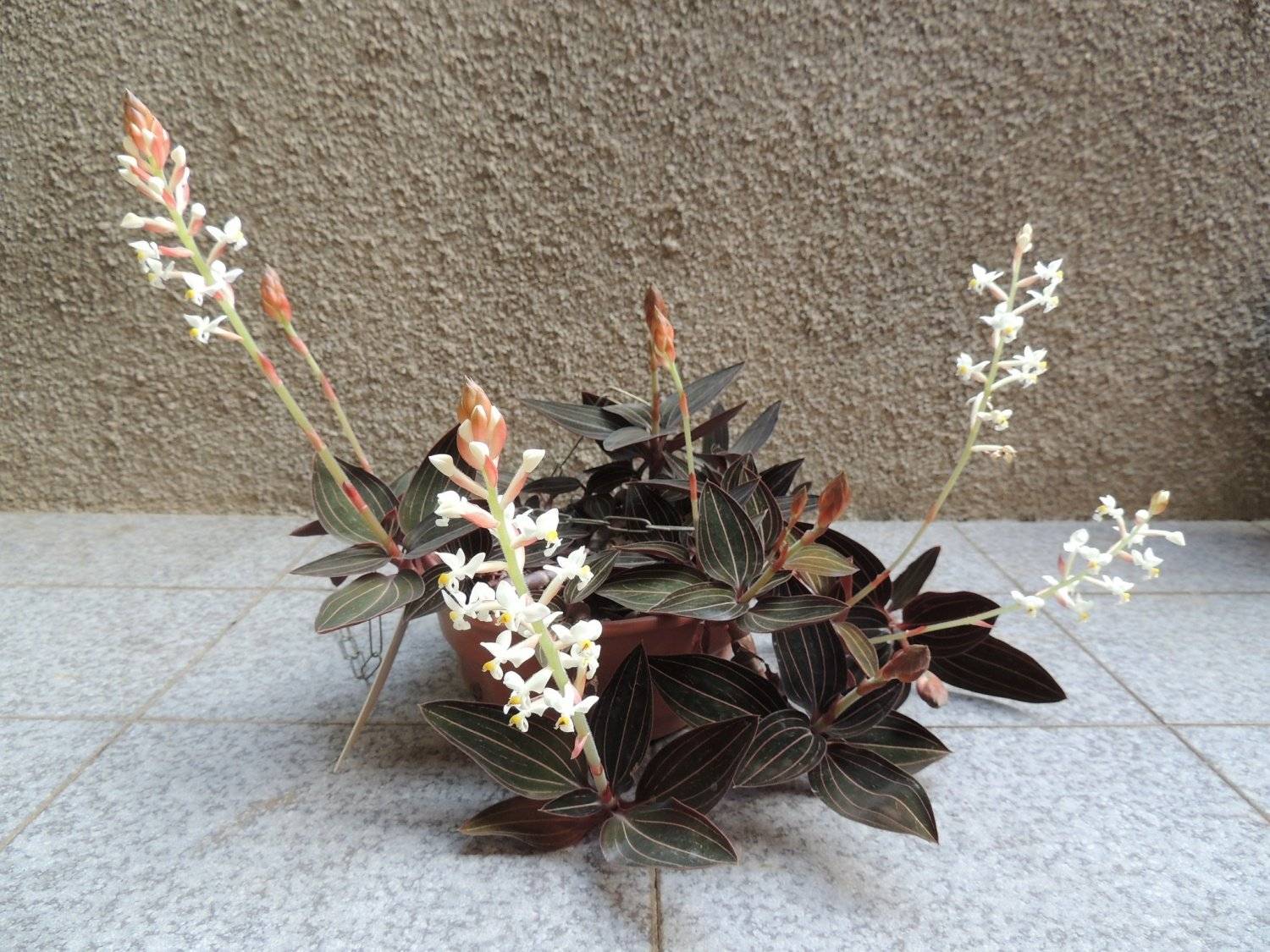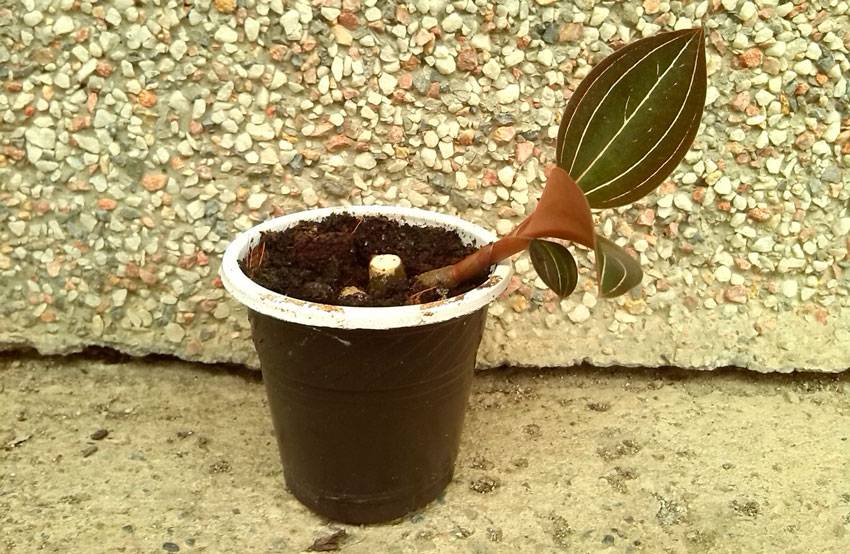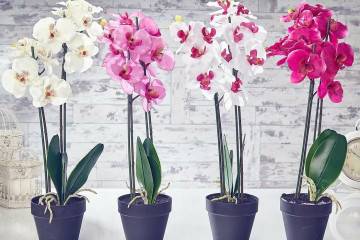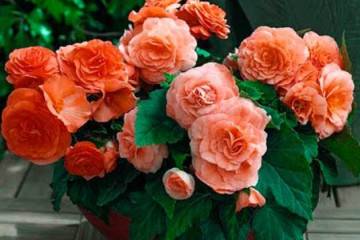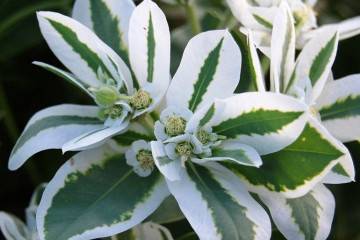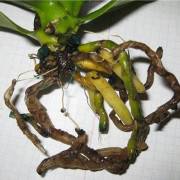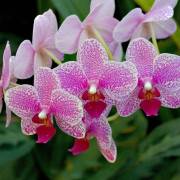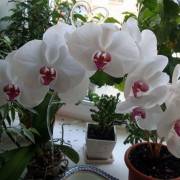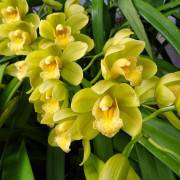Ludisia orchid: the main types and options for home care
Content:
The ludisia orchid is a beautiful, but very whimsical plant, which is quite difficult to care for. Belongs to the Orchid family. It is found in many countries of Asia with a tropical climate: China, Vietnam, Thailand and others. Ornamental ludisia grows at home and is divided into several species that are very different from each other.
Types of ludisia orchids
All ludisias are divided into 3 types, each of which has many distinct varieties.
Discolor
In nature, there is only one type of plant - Ludisia Discolor. She does not have a pronounced color, while she has a lot of flowers. At the same time, an orchid can have up to 6 leaves with silvery veins. At certain periods, small white flowers begin to bloom.
Decorative leaf
Orchid decorative leaf has many varieties that differ only in appearance. And every day botanists breed new ones. The most common varieties include ludisia:
- Dawson. It has large leaves with thin, slightly pinkish stripes. It reaches a height of up to 30 centimeters.
- Odin. The veins on the leaves are silvery. There are paired strokes on the central stripe.
- Alba. The color of this orchid is much lighter and does not have a burgundy tint. The leaves are completely filled with yellowish veins.
- Otletae. A very dark plant with orange streaks on the leaves.
- Tanlaniana. The leaf plate is wider than that of other species and has a golden mesh in the center.
- Velveteen. The color is deep green, the leaves are slightly velvety to the touch. Straight red stripes run along the outside of the sheet.
Multicolored
The most popular type of ludisia is ludisia multicolored. Each stem of a plant can have from 3 to 5 bunches of leaves with veins of different colors. Peduncle length is about 20 centimeters. The most common varieties are:
- Condorensis. Leaves and peduncles are large.
- Dawsoniana. The leaves are almost black with scarlet veins.
Home care
Compared to other representatives of orchids, the most special type is ludisia, home care is quite difficult to carry out in the proper form. For many gardeners, the plant simply dies. To prevent this from happening, it is necessary to create favorable conditions for survival.
Temperature
Under natural conditions, earthen orchids or Ludisia Discolor can withstand temperatures from 10 to 37 degrees. But flowers growing in home comfort should not be exposed to such extreme conditions.
In the summer, experts recommend maintaining the temperature in the room at 20-30 degrees during the day. At night, it is desirable that the temperature is 5 degrees lower. In order for ludisia to begin to bloom, it needs a daily temperature drop.
Air humidity
In addition to the temperature of ludisia, other care is needed. Air humidity plays an important role in plant life. Most of all, he likes humidity of about 65%, however, it is not recommended to use a sprayer to increase it.Otherwise, ugly spots from dried water will remain on the sheets. A good solution would be to place a container with water next to the flower or pour wet expanded clay into the pallet.
Correct lighting
Ludisia is a very shade-loving plant, so it should not be placed in direct sunlight. He will be most comfortable at the western or northern windows, and even better in the center of the room, where he will have to use artificial lighting devices. This is exactly what experienced orchid growers advise to do. In the light, the plant should be from 11 to 13 hours. In winter, during these hours, it will have to be illuminated artificially.
Top dressing
Top dressing for ludisia should be regular, using only suitable fertilizers. In order not to make a mistake in the choice of feeding, you need to adhere to the following rules:
- You cannot use universal feeding. This is due to the high concentration of active ingredients. This is especially true for agricultural fertilizers: superphosphate, nitrate, urea.
- Dry granules should not be used. Only liquid fertilizers with the inscription "For orchids" are suitable for Ludisia.
- You cannot fertilize the plant on dry soil. Any dressing is applied exclusively after watering.
- No need to fertilize ludisia over the leaves. For these orchids, only root feeding is suitable. Applying fertilizer to the leaves leads to a loss of decorative appearance.
- The concentration of fertilizing solutions should be approximately 2 times lower than the manufacturer claims. Ludisias cannot assimilate a large amount of fertilizer at a time. If you overfeed the plant, the soil will eventually become too salty and unsuitable for ludisia to live.
Priming
The soil for the plant should be loose and have good water and air permeability. The best soil for ludisia should contain small pieces of pine bark, slightly decayed foliage and high moor peat. For planting, it is better to choose a wide and low container with a expanded clay drainage layer.
Watering rules
No Ludisia likes dryness. The flower should always be slightly damp. In this case, the liquid should not be in the pot for a long time, otherwise the plant will begin to rot. Before watering, water must be infused for a while, be soft and at room temperature. For watering, you need to use the method of completely immersing the pot in water for a few minutes.
Pests
Due to improper care, ludisia can be affected by various pests:
- spider mite;
- mealy worm;
- whitefly;
- shield.
Reproduction of ludisia
Ludisia is a plant that propagates by cuttings. This method is the simplest one.
To get the second flower, you need to do the following:
- Cut off the stem gently and leave it in warm water.
- When roots appear, wait until a length of 0.5 centimeters is reached.
- Transfer the stalk to sphagnum moss in a mini greenhouse.
- Air the cutting daily and wait for the roots to grow up to one and a half centimeters.
- Place the plant in a pot filled with substrate.
If, when planting the cuttings in the substrate, it begins to turn yellow and lose turgor, then there are several reasons why this could happen:
- The ground may be too heavy.
- There is always the possibility that pathogenic flora has started up in the soil.
- The pot is too large.
To avoid this, planting the cuttings must be done in a light substrate of leafy earth and perlite in equal proportions and in the smallest pot that can only be found.
The orchid is a truly amazing plant that many growers refuse. But if you make an effort and take a high-quality approach to caring for it, you can get a flower of extraordinary beauty that will perfectly fit and complement any interior.
